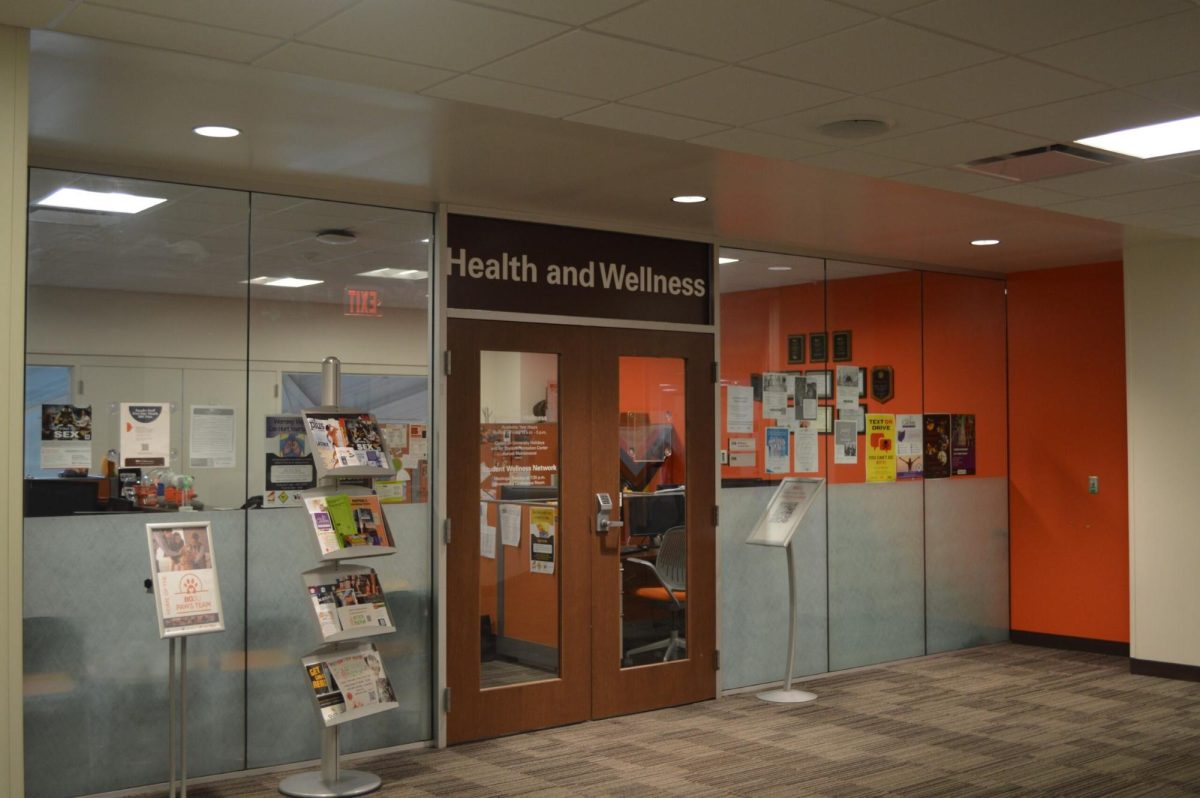A new bus has hit the routes of the University shuttle service for the summer, and it is hauling more than passengers. It is bringing university-developed, environmentally friendly, state of the art technology to corporations that market buses around the world.
The bus is hauling passengers weekdays from the visitor’s center to the Founders Residence Hall from 9 a.m. to 11 a.m. and then around the main shuttle route from 11 a.m. to 5 p.m. until August 19. It is testing a patented propulsion system developed by the College of Technology’s Electric Vehicle Institute known as a “hybrid booster drive.”
The booster drive was developed for vehicles that make frequent stops, such as shuttles and delivery vans. When the shuttle nears a stop, the energy used to bring the bus to a halt–heat that is normally dissipated by break pads–is stored in battery-like cells known as “ultracapacitors.” When the shuttle accelerates, approximately 50 percent of the force comes from the booster drive, which is powered by the ultracapacitors. Once the shuttle reaches 35 mph, the diesel engine takes over and the bus is propelled normally.
The system reduces fuel consumption and emissions by around 30 percent and extends the life of brakes by as much as four times. With a 50 percent increase in the per-gallon price of diesel fuel in the last year and the cost of brake maintenance being expensive in the upkeep of shuttles, eyebrows across the public transportation industry are raising at the very mention of the new technology.
One manufacturer, Goshen Coach of Elkhart, Ind., has licensed the technology from the University in hopes of commercial use, following a testing phase to begin later this year. Tests will utilize five shuttles manufactured with the booster drive.
The booster drive is the first university-developed technology licensed for potential commercial use.
One of the shuttles Goshen manufactures will be sent to the Federal Transit Administration’s testing center in Altoona, Pa. The other four will be placed under monitored service.
The Altoona test simulates about 120,000 miles on the bus over a period of three months in order to generate a report on how the bus operated. Large municipalities that receive funds from the federal government to assist them in the purchase of vehicles for their public transportation programs must use vehicles that have been through the test.
“You don’t pass, you don’t fail. They go through it with a fine-toothed comb. The Feds aren’t going to put money into a vehicle they don’t know anything about,” said Barry Piersol, director of the Institute. “A report has to be run, and Goshen can then begin selling the hybrid version. Bus six and on the University makes a commission.”
According to Anthony Palumbo, the Institute’s chief of operations, the booster drive has some unique advantages over other hybrid systems. While the booster drive is still in the prototype stage, one of the potential advantages is reduced cost in comparison to other systems.
“The system basically has the least amount of parts of most electric hybrid systems,” he said.
Palumbo added that the technology was developed for medium duty trucks and buses, as opposed to larger, more expensive vehicles, where a more elaborate and expensive hybrid system would be more economical.
“It has a great niche in the market,” said Piersol.
Another unique selling point of the booster drive is the use of ultracapacitors instead of batteries, which have long been a staple of vehicles developed by the Institute. Ultracapacitors are more efficient at storing energy during braking and then returning it to the wheels, and have a longer life.
“Most electric drives, the battery is always the part that’s in question for service and replacement. With ultracapacitors, we’re looking to not replace those over the whole life of the vehicle. So that way, it’s almost a trouble free system,” Palumbo said.
Manufacturers examining the booster drive might also be pleased to note that the booster drive runs in parallel to the diesel engine. That means that if the booster drive were to fail, the bus would continue under normal, diesel-powered operation. The new system does not alter the engine or transmission.
For the driver, this means, well, nothing. The bus operates just as any other bus would.
“The system is seamless to the driver,” Palumbo said, adding that the University shuttle operators driving the bus enjoy the experience.
“It’s superior to a conventional bus in performance,” veteran shuttle operator Gordon Taylor said, enthused on his first day driving the vehicle.
Although the system is currently being licensed for medium duty buses, future markets may involve an entirely different vehicle, a “clean” refuse truck.
Piersol is excited about problems normally associated with refuse trucks that would be eliminated by the booster drive technology.
“You know that baby’s stopping a way lot more times. You can just imagine following that trash truck: big old blare of black smoke coming out of the tail pipe, only going a hundred yards, comes to a screeching halt. Screeeech! It’s like the perfect candidate,” said Piersol.
Piersol also indicated that a member of the Institute’s team would be visiting a company in Brazil, where 3,000 buses where recently ordered. The company would not be interested in medium-sized buses though. So, thankfully for the Institute, the booster drive technology is scalable to accommodate larger shuttles–those that have not already been licensed to a corporation.
“The best way I can define our licensing agreement,” Piersol said, “is to think of this thing as a pie. And the whole pie is all the different kind of vehicles, and there is this little slice down here that we have licensed. Small and mid-sized buses, three types of buses in North America. The rest of the pie–Europe, Asia, Brazil, trash trucks–all those pieces are still out there,” he said.







